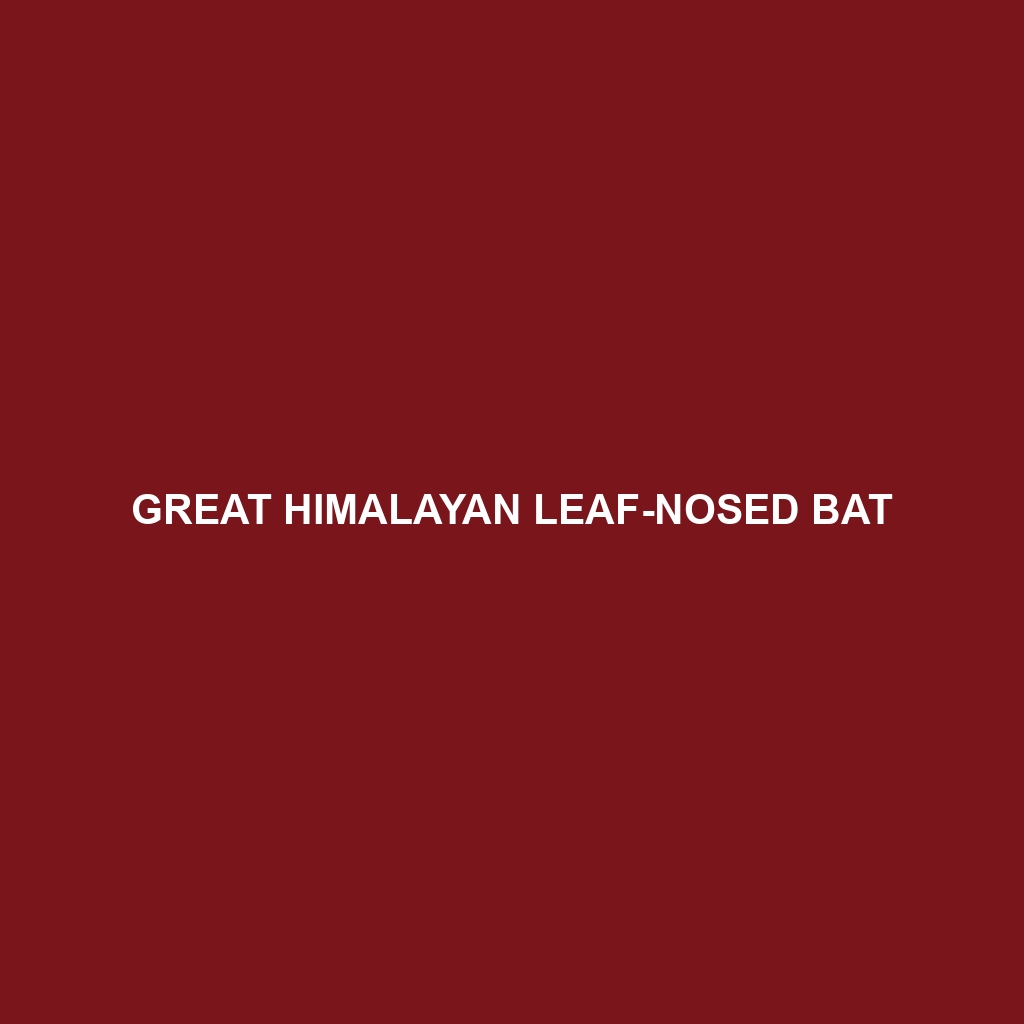Great Himalayan Leaf-nosed Bat
Common Name: Great Himalayan Leaf-nosed Bat
Scientific Name: Murina elongata
Habitat
The Great Himalayan Leaf-nosed Bat is primarily found in the mountainous regions of Central and South Asia, particularly in the Himalayas and surrounding areas. Its preferred habitats include subtropical and temperate deciduous forests, as well as rocky outcrops and caves where they roost. This bat thrives in elevations ranging from 1,000 to 3,000 meters, making it a unique inhabitant of the high-altitude ecosystems.
Physical Characteristics
This species exhibits distinctive features, with an average wingspan of 25 to 30 centimeters. The Great Himalayan Leaf-nosed Bat has a characteristic leaf-like structure on its nose, which aids in echolocation and communication. Its fur is generally a mix of dark brown to grayish tones, providing effective camouflage against the rocky terrain of its habitat. The combination of its striking morphology and compact body shape makes it an interesting subject for researchers and enthusiasts alike.
Behavior
The Great Himalayan Leaf-nosed Bat is predominantly nocturnal, actively foraging for food during the night. It utilizes its sophisticated echolocation abilities to navigate and locate prey in the dark. This species is known for its agile flight patterns, which allow it to adeptly maneuver through its mountainous environment. Socially, these bats tend to roost in colonies, often forming tight-knit groups for heightened protection and communal warmth.
Diet
The diet of the Great Himalayan Leaf-nosed Bat consists mainly of small insects, such as moths, beetles, and flies. It employs its echolocation skills to hunt and capture insects mid-air. This insectivorous diet plays a crucial role in controlling insect populations, thus supporting the ecological balance in its habitat.
Reproduction
This bat species typically breeds once a year, with the mating season occurring in late spring. After a gestation period of around 60-80 days, females give birth to a single pup. The young are weaned after several weeks and begin to fly on their own shortly after. Parental care is crucial during this time, as the mothers provide warmth and nourishment until the pups gain independence.
Conservation Status
The Great Himalayan Leaf-nosed Bat is currently listed as vulnerable on the IUCN Red List. This status reflects concerns regarding habitat loss due to deforestation and human encroachment, as well as the impacts of climate change on its high-altitude environment. Conservation efforts are essential to ensure the survival of this unique species.
Interesting Facts
One fascinating aspect of the Great Himalayan Leaf-nosed Bat is its ability to thrive in extreme altitudes, exhibiting adaptations that other bat species lack. Its sophisticated nose structure not only aids in echolocation but also enhances its social communication, making it a subject of interest in studies related to echolocation and animal communication.
Role in Ecosystem
The Great Himalayan Leaf-nosed Bat plays a vital role in its ecosystem as a natural pest controller, helping to maintain the balance of insect populations. Additionally, by dispersing seeds through their droppings, these bats contribute to the regeneration of plant life in their habitats, further emphasizing their ecological importance.
